Continued from Part 3
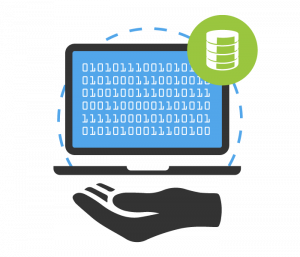 11) Databases are simply more capable when it comes to data stewardship
11) Databases are simply more capable when it comes to data stewardship
Data management is a broad term that includes the range of activities that we have discussed elsewhere in this blog series, including sample planning and collecting, inputting data, uploading EDDs (Electronic Data Deliverables), and analyzing and reporting environmental data and information.
However, the full scope of data stewardship is even broader than this, including necessary things like knowing where your data is located and knowing the quality of the data used in your regulatory reports.
Here at Locus, we have had new customers come to us with some incredible horror stories:
- data “held hostage” by third parties
- data lost over time with multiple contractor changes
- data stored in email or file cabinets
- data in scattered piles of PDF documents or hard copies (very typical for boring logs)
- labs unable to generate fresh EDDs due to laboratory LIMS system changes or industry consolidation
These are just some of the latest examples we have encountered. We are constantly surprised and concerned at the variety of ways that organizations can unwittingly put their critical data at risk.
The key to effective data stewardship is to know where it is, know its quality, and have uninterrupted access to it. This is something that Excel can’t offer, and it’s also something a hodgepodge of spreadsheets, emailed PDF files, stacks of hard copy boring logs in multiple offices, and custom-built databases simply can’t do.
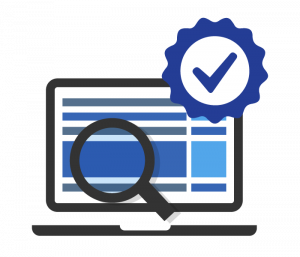 12) Databases are more supportive of software quality assurance practices
12) Databases are more supportive of software quality assurance practices
Quality assurance is a popular topic of discussion, but few people consider it in terms of the configurations (behind the scenes code) that people add to popular off-the-shelf programs such as Excel or Access. Of course, these programs go through rigorous quality assurance testing before being released to the public to ensure they perform as expected. After all, no one questions that Excel can perform math correctly.
However, what is often not considered, are the macros, custom functions, and calculations that are often added to spreadsheets when deployed for managing environmental data and other tasks.
Here at Locus, we have yet to encounter one Excel spreadsheet or Access database from a customer that has been documented, testedand comes with clear user instructions. We also have never encountered anyone that has never made errors in Excel by picking the wrong cells for a formula.
You would avoid these types of oversights and lax QA protocols with commercial software that relies on expert functionality for its business. For example, if Locus EIM did not perform proper calculations (repeatedly) or load data properly (repeatedly), the product would not be successful in the marketplace, and we wouldn’t have thousands of users who trust and use our software every day. This level of quality assurance is simply not found in user-configured, ad hoc “databases” built-inExcel or Access.
As more environmental sites become embroiled in litigation, or are in the process of making health and risk clean up decisions, the importance of data quality assurance cannot be ignored. Water utilities that are charged with providing clean safe drinking water to the public can’t rely on ad hoc Excel or Access systems to analyze such critical data.
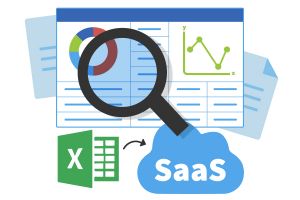 Custom databases built in-house vs. commercial software
Custom databases built in-house vs. commercial software
If you’re serious about rethinking your environmental data management system and finally ditching your spreadsheets for a more mature and secure solution, you might be considering the advantages of having an in-house team or a contractor build a custom database system for you with Access or another widely available tool.
After all, only you know the idiosyncrasies that your organization deals with, right? You can have your developers tailor your system to fit your needs exactly.
Moreover, with a custom solution, you can make sure that it’s integrated with your organization’s other systems and processes, like document management and invoicing.
Some of this might be true, but let’s take a closer look—and consider the tradeoffs.
Is your organization as unique as you think?
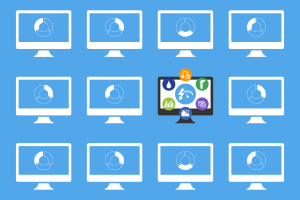 Every organization is different, especially if we’re comparing organizations and businesses across different industries. Water utilities face an entirely different set of challenges than a multinational oil and gas corporation. Despite these differences, diverse organizations share some remarkable similarities when it comes to managing environmental data, and in most cases, you’re not the only environmental professional who has experienced most of the challenges your organization has faced.
Every organization is different, especially if we’re comparing organizations and businesses across different industries. Water utilities face an entirely different set of challenges than a multinational oil and gas corporation. Despite these differences, diverse organizations share some remarkable similarities when it comes to managing environmental data, and in most cases, you’re not the only environmental professional who has experienced most of the challenges your organization has faced.
A commercial software vendor with customers in a wide variety of industries naturally collects an aggregated body of knowledge about the environmental data management needs (and quirks) of their customers. By adopting existing commercial software, your organization can benefit from the wisdom of this crowd, getting access to functionality and modules that can streamline your processes in ways you couldn’t imagine (or afford to develop).
On top of this, commercial software solutions that have been around for a while usually have pretty good support for various API integrations of commonly-used systems, or they can easily build the integrations into their solution (usually for a small fee). Attempting to build these integrations into a custom, in-house solution can lead to astronomical costs and unforeseen complications that often can’t be accurately estimated until the work is well underway.
Can your in-house resources fully examine your business processes and accurately identify your needs?
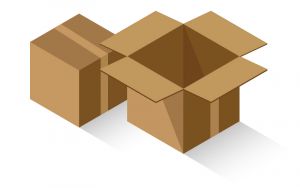 Commercial software vendors are in the business of translating real customer needs into successful software products. As an environmental professional, you probably have a good understanding of your business processes, but do you trust yourself and your development team to find and implement the most efficient, effective, and scalable solution for managing your ever-increasing amounts of data?
Commercial software vendors are in the business of translating real customer needs into successful software products. As an environmental professional, you probably have a good understanding of your business processes, but do you trust yourself and your development team to find and implement the most efficient, effective, and scalable solution for managing your ever-increasing amounts of data?
“Off-the-shelf” can sometimes be a misnomer. Many commercial vendors nowadays have learned to build their platforms to be configurable and customizable, to better accommodate the wide variety of customer industries and organization-specific needs. Don’t be afraid to reach out to a few vendors to see what they can offer. Consider a vendor that has experienced domain experts, that have been in your shoes and are motivated to help you solve your problems, and deliver the solution you need.
A good vendor will ask many questions about your business processes, your current system, and your pain points. You might be surprised at how easy-to-configure and flexible “off-the-shelf” systems can be.
Think forward—could today’s “bells and whistles” become tomorrow’s critical features?
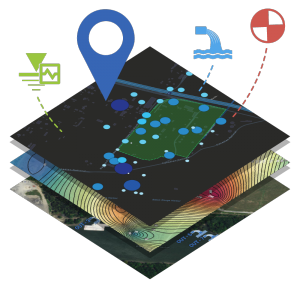 Are GIS and mobile part of your current environmental data management process? If so, you will absolutely want to have them integrated with any database solution. Otherwise you’ll be dealing with a mess of duplicate and out-of-date data all over again. Building integrations with these complex systems can be just as challenging as building the database management system itself.
Are GIS and mobile part of your current environmental data management process? If so, you will absolutely want to have them integrated with any database solution. Otherwise you’ll be dealing with a mess of duplicate and out-of-date data all over again. Building integrations with these complex systems can be just as challenging as building the database management system itself.
A robust commercial software solution comes with these features built-in.
Let’s go even further—have you ever thought about how automation, the Internet of Things, or artificial intelligence could impact your business processes in 5 or 10 years (or sooner)? Commercial software vendors often have the resources and the incentives to explore new frontiers of technology and stay on the cutting-edge of their market. When your peers or competitors start integrating these new technologies into their workflows, will your custom system be able to adapt and keep up?
Hopefully, by this point, we have convinced you of the superiority of database management systems over spreadsheets when it comes to managing environmental data. Now, it’s time to make some efforts to examine the specific shortcomings of your current system and consider your options.
Now that you have had the opportunity to consider why SaaS databases allow you to manage your complex data efficiently, make data integration and reporting faster and easier and scale to your requirements, contact Locus Sales at (650) 960-1640 or
fill out the contact form below to find out what Locus can do for you.
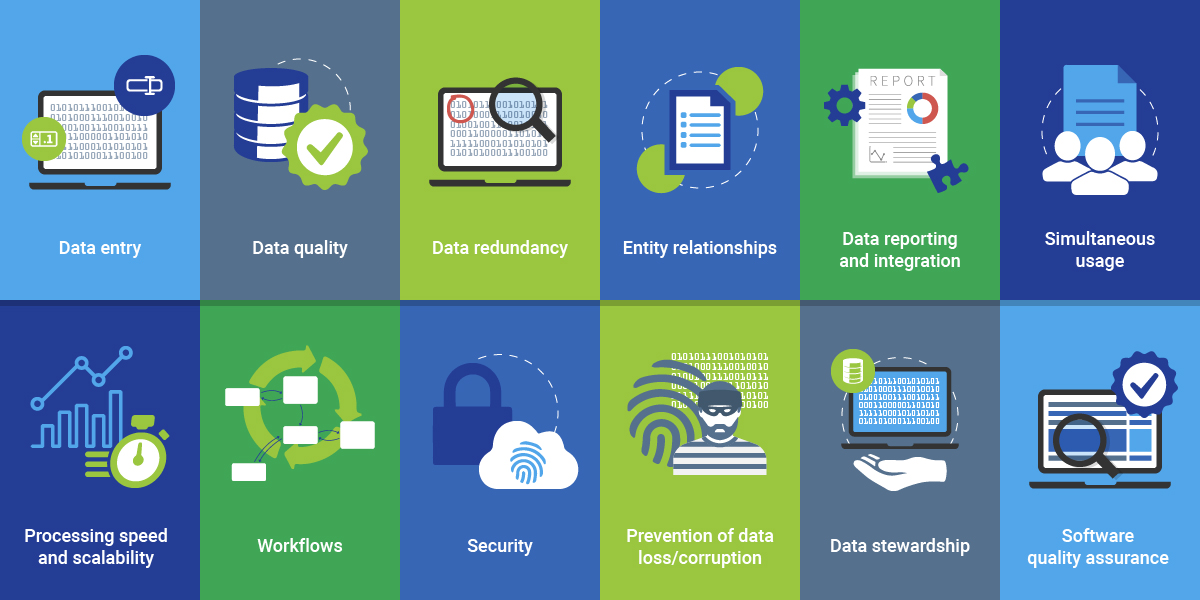
Make sure to read the entire series to find out about 12 reasons commercial SaaS databases excel at managing complex environmental data!
About the author—Gregory Buckle, PhD, Locus Technologies
 Dr. Buckle has more than 30 years of experience in the environmental field, most of which have been devoted to the design, development, and implementation of environmental database management systems. When he joined Locus in 1999, he was responsible for building and deploying Locus’ cloud-based EIM software. He was also instrumental in customizing EIM for the water utility industry and developing EIM’s powerful Sample Planning and Data Validation modules. The latest iteration of the Sample Planning module that Dr. Buckle built is currently being used by Los Alamos National Laboratory and San Jose Water Company to plan and schedule thousands of samples per year.
Dr. Buckle has more than 30 years of experience in the environmental field, most of which have been devoted to the design, development, and implementation of environmental database management systems. When he joined Locus in 1999, he was responsible for building and deploying Locus’ cloud-based EIM software. He was also instrumental in customizing EIM for the water utility industry and developing EIM’s powerful Sample Planning and Data Validation modules. The latest iteration of the Sample Planning module that Dr. Buckle built is currently being used by Los Alamos National Laboratory and San Jose Water Company to plan and schedule thousands of samples per year.
About the author—Marian Carr, Locus Technologies
 Ms. Carr is responsible for managing overall customer solution deployments and customer relationships with Locus’ government accounts. Her career at Locus includes heading the product development team of the award-winning cloud-based environmental ePortal solution as well as maintaining and growing key customer accounts with Locus’ Fortune 100 enterprise deployments. In addition, Ms. Carr was instrumental in driving the growth and adoption of the Locus EIM platform with key federal and water organizations.
Ms. Carr is responsible for managing overall customer solution deployments and customer relationships with Locus’ government accounts. Her career at Locus includes heading the product development team of the award-winning cloud-based environmental ePortal solution as well as maintaining and growing key customer accounts with Locus’ Fortune 100 enterprise deployments. In addition, Ms. Carr was instrumental in driving the growth and adoption of the Locus EIM platform with key federal and water organizations.

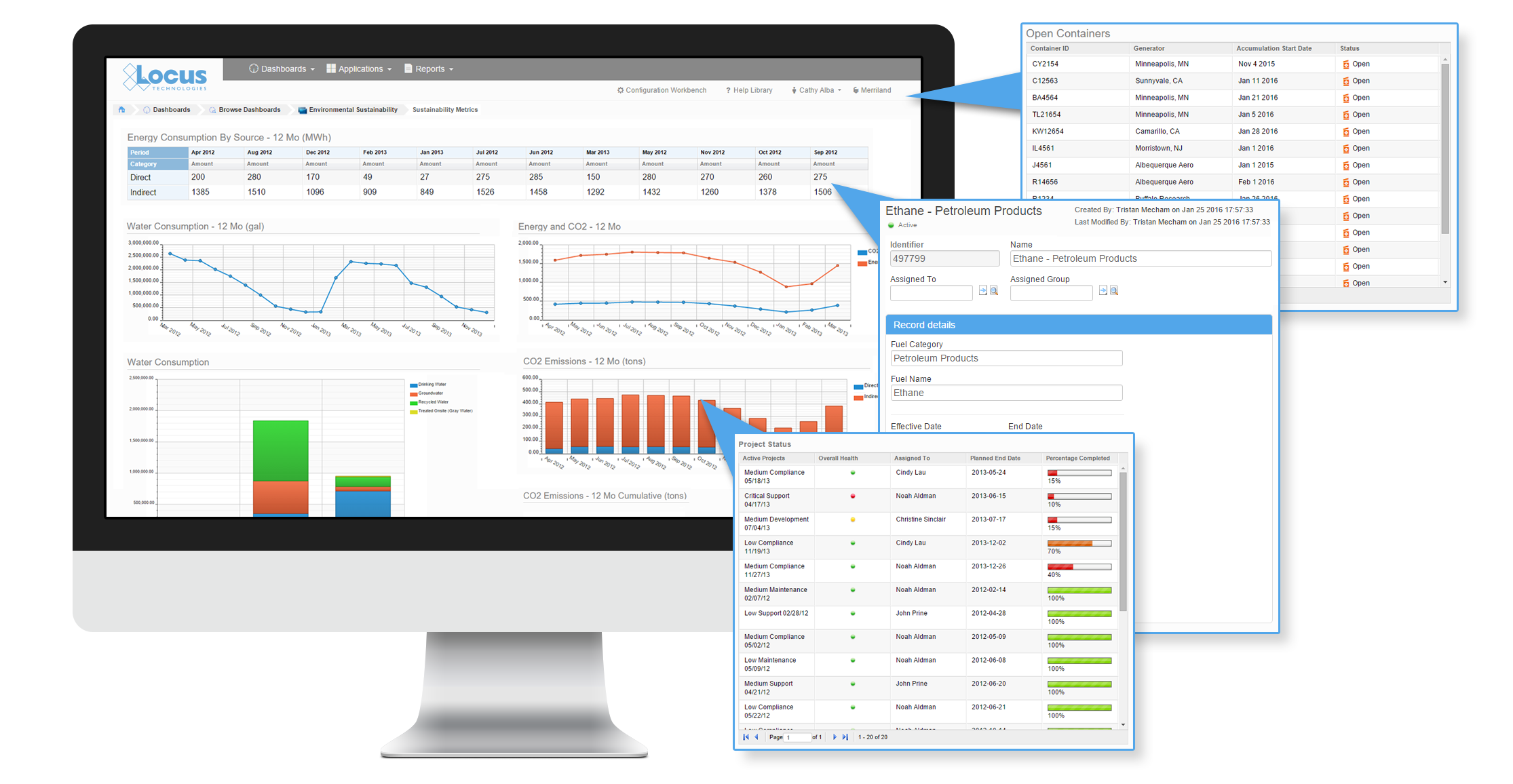


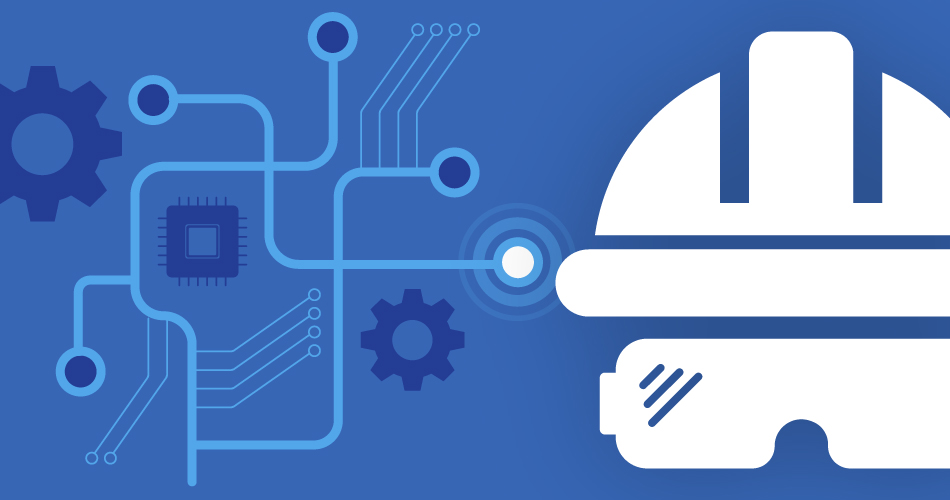
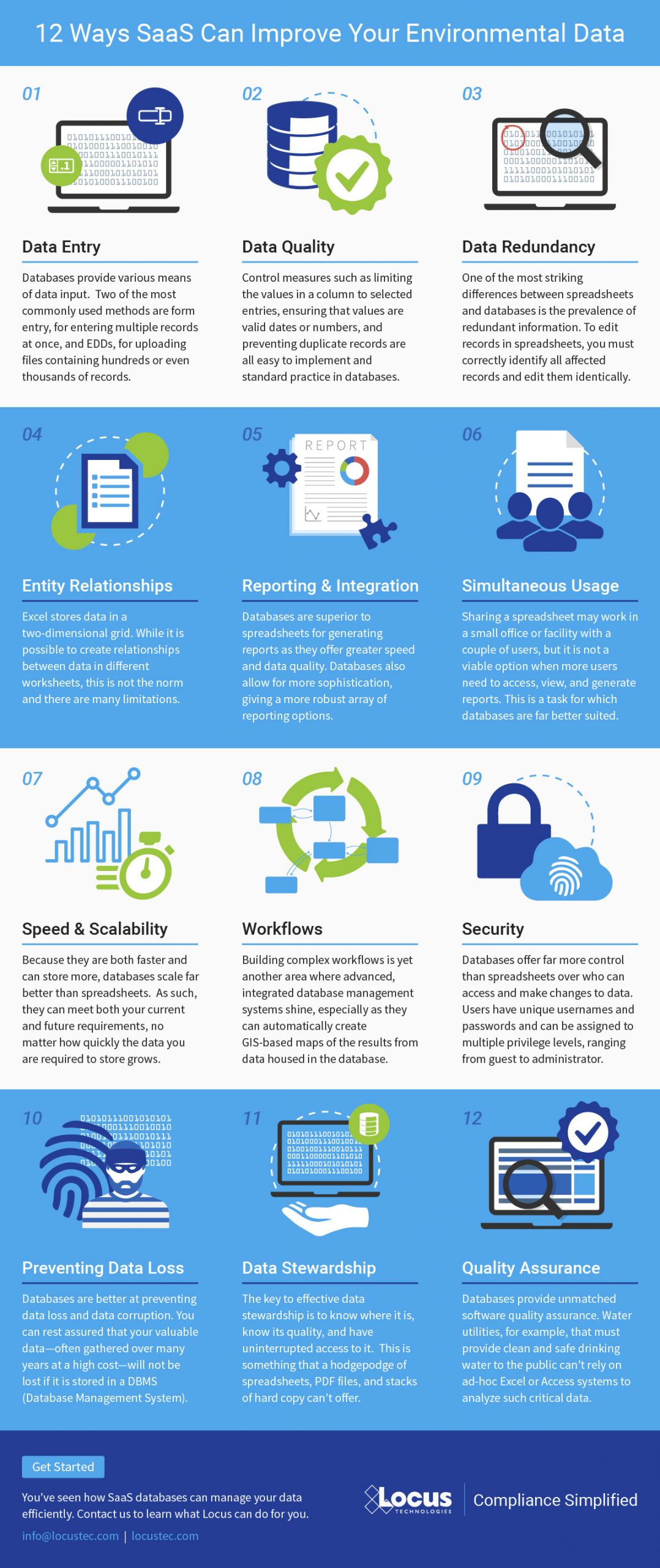
 11) Databases are simply more capable when it comes to data stewardship
11) Databases are simply more capable when it comes to data stewardship 12) Databases are more supportive of software quality assurance practices
12) Databases are more supportive of software quality assurance practices Custom databases built in-house vs. commercial software
Custom databases built in-house vs. commercial software Every organization is different, especially if we’re comparing organizations and businesses across different industries. Water utilities face an entirely different set of challenges than a multinational oil and gas corporation. Despite these differences, diverse organizations share some remarkable similarities when it comes to managing environmental data, and in most cases, you’re not the only environmental professional who has experienced most of the challenges your organization has faced.
Every organization is different, especially if we’re comparing organizations and businesses across different industries. Water utilities face an entirely different set of challenges than a multinational oil and gas corporation. Despite these differences, diverse organizations share some remarkable similarities when it comes to managing environmental data, and in most cases, you’re not the only environmental professional who has experienced most of the challenges your organization has faced. Commercial software vendors are in the business of translating real customer needs into successful software products. As an environmental professional, you probably have a good understanding of your business processes, but do you trust yourself and your development team to find and implement the most efficient, effective, and scalable solution for managing your ever-increasing amounts of data?
Commercial software vendors are in the business of translating real customer needs into successful software products. As an environmental professional, you probably have a good understanding of your business processes, but do you trust yourself and your development team to find and implement the most efficient, effective, and scalable solution for managing your ever-increasing amounts of data? Are GIS and mobile part of your current environmental data management process? If so, you will absolutely want to have them integrated with any database solution. Otherwise you’ll be dealing with a mess of duplicate and out-of-date data all over again. Building integrations with these complex systems can be just as challenging as building the database management system itself.
Are GIS and mobile part of your current environmental data management process? If so, you will absolutely want to have them integrated with any database solution. Otherwise you’ll be dealing with a mess of duplicate and out-of-date data all over again. Building integrations with these complex systems can be just as challenging as building the database management system itself.
 Dr. Buckle has more than 30 years of experience in the environmental field, most of which have been devoted to the design, development, and implementation of environmental database management systems. When he joined Locus in 1999, he was responsible for building and deploying Locus’ cloud-based EIM software. He was also instrumental in customizing EIM for the water utility industry and developing EIM’s powerful Sample Planning and Data Validation modules. The latest iteration of the Sample Planning module that Dr. Buckle built is currently being used by Los Alamos National Laboratory and San Jose Water Company to plan and schedule thousands of samples per year.
Dr. Buckle has more than 30 years of experience in the environmental field, most of which have been devoted to the design, development, and implementation of environmental database management systems. When he joined Locus in 1999, he was responsible for building and deploying Locus’ cloud-based EIM software. He was also instrumental in customizing EIM for the water utility industry and developing EIM’s powerful Sample Planning and Data Validation modules. The latest iteration of the Sample Planning module that Dr. Buckle built is currently being used by Los Alamos National Laboratory and San Jose Water Company to plan and schedule thousands of samples per year. Ms. Carr is responsible for managing overall customer solution deployments and customer relationships with Locus’ government accounts. Her career at Locus includes heading the product development team of the award-winning cloud-based environmental ePortal solution as well as maintaining and growing key customer accounts with Locus’ Fortune 100 enterprise deployments. In addition, Ms. Carr was instrumental in driving the growth and adoption of the Locus EIM platform with key federal and water organizations.
Ms. Carr is responsible for managing overall customer solution deployments and customer relationships with Locus’ government accounts. Her career at Locus includes heading the product development team of the award-winning cloud-based environmental ePortal solution as well as maintaining and growing key customer accounts with Locus’ Fortune 100 enterprise deployments. In addition, Ms. Carr was instrumental in driving the growth and adoption of the Locus EIM platform with key federal and water organizations.